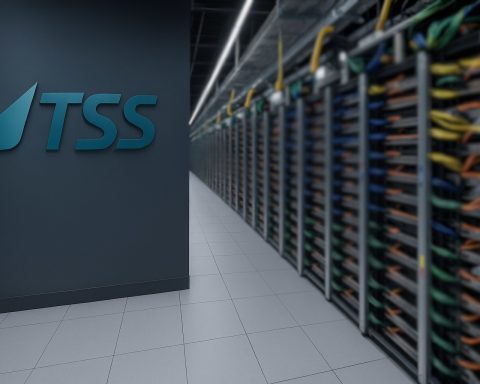Meta Platforms (NASDAQ: META) heads into Friday’s U.S. session under pressure from a broader tech selloff, intensifying scrutiny of its massive AI spending plans, and fresh criticism from famed investor Michael Burry. Here’s everything traders and investors should know about META stock before the opening bell on Friday, November 14, 2025.
Quick takeaways before the U.S. market opens
- Pre‑market: Meta is indicated modestly lower. Public.com shows META at about $602 in pre‑market trading around 7:00 a.m. ET, down roughly 1.3% from Thursday’s close of $609.89. Earlier, MarketWatch had it closer to $606.56, off about 0.6%, and MarketChameleon reported pre‑market trades around $612.75, highlighting choppy early action. [1]
- Macro backdrop: Index futures are pointing lower again after a sharp tech-driven selloff on Thursday. Nasdaq 100 futures were down about 1.2%, S&P 500 futures about 0.7%, and Dow futures around 0.5% as of ~7:00 a.m. ET. [2]
- Fundamentals still strong: Q3 2025 revenue jumped about 26% year over year to $51.24 billion, beating expectations and underscoring robust ad demand. [3]
- But capex is exploding: Meta now expects 2025 capital expenditures of $70–72 billion and has signaled even higher capex in 2026, largely to fund AI data centers and infrastructure. [4]
- Burry’s “common fraud” accusation: Michael Burry alleges Meta and other AI “hyperscalers” are overstating earnings by stretching the depreciation life of AI hardware, calling it “one of the more common frauds of the modern era.” He estimates earnings for firms like Meta could be overstated by around 20% between 2026 and 2028 if depreciation is too slow. [5]
- Street view today: Despite the drawdown, Trefis characterizes META as “Fairly Priced” with “Very Strong”growth and profitability, even as the stock is down about 15% over the past month and trades well below its 52‑week high near $796. [6]
1. Meta stock pre‑market snapshot (Nov. 14, 2025)
Thursday’s close (Nov. 13):
- Close: $609.89
- Day range: roughly $603 to $617.65
- Change: about +0.14% on the day
- Recent trend: META has declined on 6 of the past 10 sessions and is down roughly 8–9% over that period, and about 15% over the past month. [7]
Pre‑market indications this morning:
- Public.com reports META trading near $602.05 as of 7:00 a.m. ET, down $7.84 (-1.29%) vs. Thursday’s close. [8]
- MarketWatch shows a pre‑market quote around $606.56 (-0.55%) as of 4:15 a.m. ET, with light before‑hours volume. [9]
- MarketChameleon cites a pre‑market last trade around $612.75 with roughly 522k shares changing hands in early hours. [10]
Taken together, those feeds suggest volatile but modestly negative sentiment heading into the open, with trading oscillating in roughly the $602–$613 band.
2. The macro context: tech under pressure again
Meta’s early weakness has to be viewed in the context of a broader risk‑off move in tech:
- Investopedia’s live blog notes that Nasdaq 100 futures are down about 1.2%, with S&P 500 and Dow futures down 0.7% and 0.5%, respectively, after the Dow dropped about 800 points on Thursday amid a sharp tech selloff. [11]
- Investors are increasingly uneasy about lofty AI valuations and huge capex commitments across Big Tech, driving rotation out of the highest‑multiple names—Meta included.
Against that backdrop, META’s roughly 24% slide from a 52‑week high near $796.25 doesn’t look entirely company‑specific; it’s part of a broader re‑rating of AI‑heavy megacaps. [12]
3. AI spending: the main story hanging over META today
A major theme in this morning’s Meta coverage is whether the company’s AI spending spree will ultimately create or destroy shareholder value.
What Meta has committed to
From Meta’s own Q3 2025 update and follow‑up reporting:
- Management now expects 2025 capital expenditures of $70–72 billion, up from a prior range of $66–72 billion. [13]
- CFO Susan Li and CEO Mark Zuckerberg have both indicated capex will be “significantly” higher in 2026 as Meta accelerates AI data‑center build‑out. [14]
- Reuters and other outlets report Meta plans to invest about $600 billion in U.S. infrastructure and jobs by 2028, with a large chunk earmarked for AI data centers. [15]
- Separate reporting highlights more targeted projects, including:
A fresh Motley Fool piece published this morning (“Why Is Meta Spending Aggressively on Artificial Intelligence?”) underscores that Meta has struggled to clearly communicate these massive capex plans to investors, even as management insists the spending is necessary to maintain AI leadership. [18]
Why the market is nervous
Several recent analyses highlight the same cluster of concerns:
- Margin pressure: Higher capex and rising operating expenses mean earnings growth may lag revenue in the near term, especially with Meta guiding total 2025 expenses to $116–118 billion, up from its prior outlook. [19]
- AI “too big to fail” narrative: Morningstar/MarketWatch commentary this week argued that AI may now be “too big to fail” in the eyes of policymakers, noting that Meta and other giants booked large one‑time tax chargesrelated to AI investments and incentives. [20]
- Capex could top $100 billion in 2026: Some analysts now project Meta’s 2026 capex could exceed $100 billion, primarily for AI infrastructure and talent, based on management’s guidance that capex will be “notably larger” than 2025. [21]
This is why so many of today’s headlines about Meta are variations on the same theme: “Is all this AI spending worth it?”
4. Burry’s “common fraud” accusation and the depreciation debate
One of the biggest near‑term sentiment shocks for Meta has come from Michael Burry, the investor made famous by The Big Short. Over the last few days:
- In a widely reported social‑media post and interviews, Burry accused AI‑heavy tech giants—explicitly naming Meta and Oracle—of artificially boosting earnings by extending the “useful life” of AI hardware like GPUs well beyond realistic economic life. [22]
- He’s called this “understating depreciation by extending the useful life of assets,” labeling it “one of the more common frauds of the modern era.” [23]
- MarketWatch reports that Burry estimates around $176 billion in understated depreciation for major tech firms between 2026 and 2028, with Meta’s earnings potentially overstated by roughly 21% under current assumptions. [24]
- A Barchart article focused specifically on Meta (published yesterday) framed this as Burry accusing Meta of “common fraud” and inflated earnings, sparking a wave of debate about how Meta and its peers account for their AI capex. [25]
Bloomberg picked up the story this morning with “Burry’s Depreciation Gripe Shines Spotlight on Big Tech Profits,”further amplifying concerns around Big Tech earnings quality, including at Meta. [26]
Important nuance: These are allegations and estimates, not proven fraud findings or regulatory actions. Meta has not admitted wrongdoing and, as of this morning, no regulator has publicly accused the company of financial misstatement. Still, with investors already on edge about AI capex, Burry’s high‑profile criticism is clearly adding to the pressure on META’s valuation today.
5. Business fundamentals: Q3 beat, Reels boom, and AI upside
While the headlines focus on risks, the underlying business trends remain strong, which is why many analysts aren’t ready to give up on the stock.
Q3 2025 by the numbers
Recent earnings coverage highlights:
- Revenue: About $51.24 billion, up roughly 26% year over year, driven mainly by digital advertising demand. [27]
- Operating performance: Trefis pegs Meta’s last‑12‑month:
- Operating margin at roughly 43%,
- Operating cash‑flow margin near 57%,
- Net margin around 31%,
underscoring extremely high profitability vs. the broader market. [28]
That strength is why Trefis rates Meta’s growth, profitability, and financial stability as “Very Strong,” even after recognizing that the stock is down sharply from recent highs. [29]
Reels is quietly becoming a $50 billion machine
A Business Insider story published this morning points out that Reels, Meta’s TikTok‑style short‑video product, is now on track to generate around $50 billion a year in ad revenue, according to Mark Zuckerberg’s recent comments. [30]
The key takeaway from that report:
- Reels has gone from a defensive TikTok clone to a massive revenue engine.
- It’s particularly attractive to Meta because the company pays relatively little directly to creators compared with YouTube, improving margins while still keeping users highly engaged. [31]
For investors watching ad‑driven cash generation versus swelling capex, this is an important counterweight: Reels gives Meta a powerful, high‑margin growth lever right now, not just in some distant AI future.
6. How Wall Street is framing Meta this morning
Several fresh pieces published today and in the last 24 hours show a surprisingly balanced Street view:
- On Trefis, analysts note that although META is down about 15% in the last month and has fallen from a high near $790, its market cap (~$1.5 trillion), strong margins, and robust revenue growth justify the current valuation. Their conclusion: “Fairly Priced,” not a screaming bargain, but not broken either. [32]
- A new Motley Fool article (“Why Is Meta Spending Aggressively on Artificial Intelligence?”) argues that the capex surge is deliberate and strategic, though communication around the long‑term payoff has been poor, contributing to recent volatility. [33]
- Another Fool piece comparing Meta vs. Alphabet (also dated today) frames both as powerful AI‑and‑ads platforms, but underscores that only one will be the better long‑term buy based on valuation and growth. Even without the full text, the framing itself shows Meta is still viewed as a top‑tier AI platform stock, not a fallen angel. [34]
- A separate analysis syndicated via Nasdaq/AOL highlights Meta as one of two AI stocks poised to benefit if the Nasdaq surges again in 2026, noting that Wall Street expects Meta’s earnings to grow at around 15% annuallyover the next three years, roughly in line with projected ad‑tech spending growth of about 14% a year through 2030. [35]
Put simply: sentiment is bruised, but the long‑term narrative is intact in many analysts’ models.
7. Ownership flows and key valuation metrics
Today’s 13F‑focused notes on Meta show mixed institutional positioning rather than a one‑way exodus:
- Bank of New York Mellon has disclosed reducing its META position, with MarketBeat highlighting the cut alongside standard valuation metrics like a P/E of ~26.9 and a P/E/G of about 1.35. [36]
- A separate MarketBeat alert reports that Freestone Capital also trimmed its Meta holdings. [37]
- On the other side, Connable Office Inc. increased its stake by nearly 10% in Q2, signaling some institutional buyers view the pullback as an opportunity. [38]
- Another filing notes that New Jersey Better Educational Savings Trust still counts Meta as its sixth‑largest holding, even after cutting the position by roughly 72%. [39]
Key valuation markers cited this morning:
- Share price (prior close): $609.89
- 1‑year low / high: about $479.80 / $796.25
- Market cap: roughly $1.5–1.8 trillion, depending on source and timing
- P/E: around 26–27x
- Beta: about 1.2, indicating above‑market volatility. [40]
For traders, that 52‑week high near $796 and the 50‑day moving average around $716.58 are likely to serve as reference points for how deep this correction has become. [41]
8. What to watch in META once the market opens
Here are the key threads that could drive Meta’s price action through today’s session:
- Whether pre‑market weakness accelerates or stabilizes
- If Nasdaq futures remain ~1% lower or worse and AI names continue to be sold, Meta could see continued pressure, especially with Burry’s comments still circulating. [42]
- Any response from Meta on depreciation/accounting questions
- Thus far, the story has been driven by Burry and outside analysts. A clear disclosure or clarification from Meta on depreciation policies or the economics of its AI data centers could calm nerves—or raise new questions. [43]
- AI and capex narrative in the media
- Today’s coverage from outlets like Motley Fool, Bloomberg, MarketWatch and Business Insider is framing Meta as a high‑quality business with an unusually aggressive AI investment plan. If the narrative continues to emphasize long‑term upside over near‑term risk, that could help stabilize multiples. [44]
- How traders treat the $600+ zone
- Technically, the $600 area now functions as a psychological support region, just above the 1‑year low in the high‑$470s but well below the 50‑day average in the mid‑$700s. A decisive break below $600 on high volume could invite further momentum selling, while a bounce from this area might attract dip‑buyers who agree with the “Fairly Priced” thesis. [45]
9. Bottom line: how to frame Meta stock this morning
Heading into the Nov. 14, 2025 open, META sits at the intersection of three powerful forces:
- A powerful, still‑growing ad and social media franchise
- Q3 showed high‑20s revenue growth and enormous margins.
- Reels is on track to be a $50 billion annual ad business, supporting strong free‑cash‑flow generation today. [46]
- An unprecedented AI capex cycle
- Meta is committing tens of billions annually to GPUs and data centers, with capex likely to surpass $70–72 billion this year and rise further in 2026.
- Long‑term, this could entrench Meta as a leading AI platform; near‑term, it compresses free cash flow and heightens execution risk. [47]
- Growing skepticism about AI valuations and accounting
- Burry’s accusations of “common fraud” and overstated earnings crystallize worries that AI leaders might be massaging numbers via aggressive depreciation schedules.
- Even if regulators never agree with Burry, his critique is adding a sentiment overhang for names like Meta. [48]
For short‑term traders, the focus today will likely be on whether META can hold the $600 area and how it trades relative to other mega‑cap AI names as futures weakness translates into cash‑market moves.
For longer‑term investors, the question is more fundamental: Does Meta’s combination of dominant ad properties, rapidly scaling Reels, and massive AI investment still justify paying a mid‑20s earnings multiple—despite the capex surge and accounting controversy? Many Street models still say “yes, at least cautiously,” but the margin of error is clearly shrinking.
As always, this overview is for information only and is not financial advice. Pre‑market quotes can move quickly, and anyone trading META today should check live data and consider their own risk tolerance and investment horizon.
References
1. public.com, 2. www.investopedia.com, 3. www.aol.com, 4. investor.atmeta.com, 5. www.marketwatch.com, 6. www.trefis.com, 7. stockanalysis.com, 8. public.com, 9. www.marketwatch.com, 10. marketchameleon.com, 11. www.investopedia.com, 12. www.marketbeat.com, 13. investor.atmeta.com, 14. www.reuters.com, 15. www.reuters.com, 16. www.reuters.com, 17. www.wirecable.in, 18. www.fool.com, 19. investor.atmeta.com, 20. www.morningstar.com, 21. www.datacenterdynamics.com, 22. seekingalpha.com, 23. seekingalpha.com, 24. www.marketwatch.com, 25. www.barchart.com, 26. www.bloomberg.com, 27. www.aol.com, 28. www.trefis.com, 29. www.trefis.com, 30. www.businessinsider.com, 31. www.businessinsider.com, 32. www.trefis.com, 33. www.fool.com, 34. www.fool.com, 35. www.nasdaq.com, 36. www.marketbeat.com, 37. www.marketbeat.com, 38. www.marketbeat.com, 39. www.marketbeat.com, 40. www.marketbeat.com, 41. www.marketbeat.com, 42. www.investopedia.com, 43. seekingalpha.com, 44. www.fool.com, 45. www.marketbeat.com, 46. www.aol.com, 47. investor.atmeta.com, 48. www.marketwatch.com










